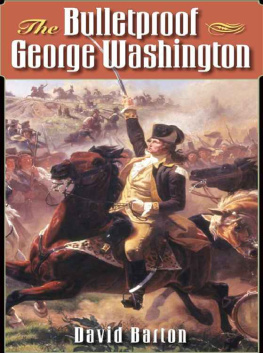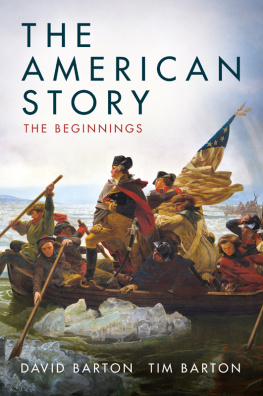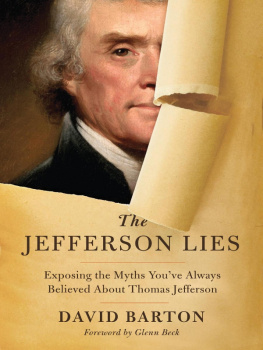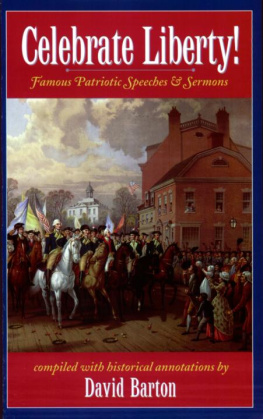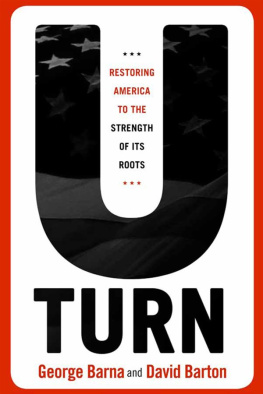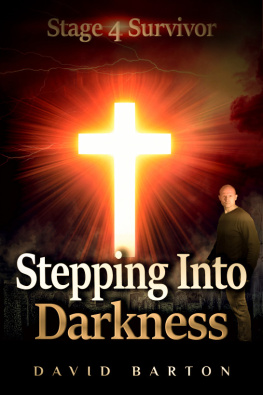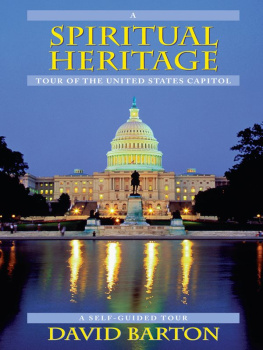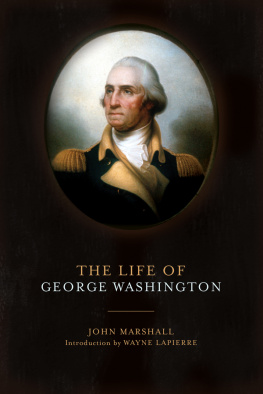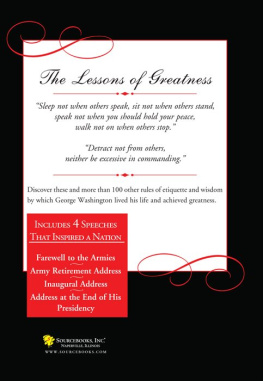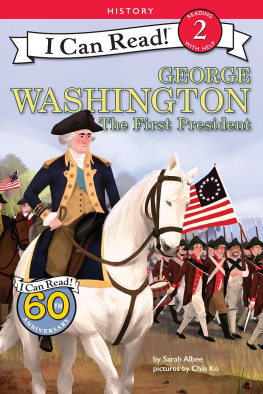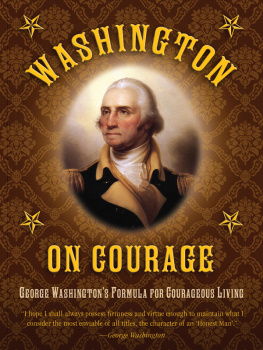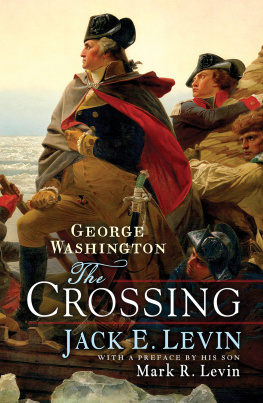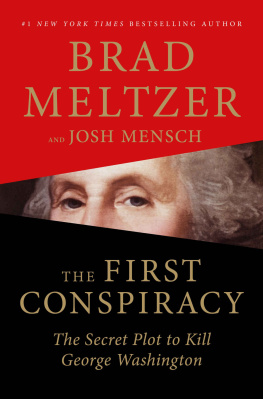
The Bulletproof George Washington
Copyright 1990 David Barton
3rd Edition, 2nd Printing, 2009
All Rights Reserved. No part of this book may be reproduced in any manner whatsoever without written permission of the publisher, except in the case of brief quotations in articles and reviews.
Additional materials available from:
WallBuilders
P.O. Box 397
Aledo, TX 76008
(817) 441-6044
For orders or to obtain a catalog, call (800) 873-2845
www.wallbuilders.com
Cover portrait:
Washington Rallying the Troops at Monmouth by Emmanuel Leutze (detail); Courtesy, University of California, Berkeley Art Museum; Gift of Mrs. Mark Hopkins; Photographer, Benjamin Blackwell
Cover design:
Jeremiah Pent
Lincoln-Jackson
838 Walden Dr.
Franklin, TN 37064
Library of Congress Cataloging-in-Publication Data
Barton, David.
The Bulletproof George Washington / David Barton. 3rd ed.
80 p; 21 cm
Includes timeline of events, sources of illustrations and endnotes.
ISBN-10: 1-932225-00-5
ISBN-13: 978-1-932225-00-6
973.2/6 LOC 91-107126
1. Washington, George, President U.S. 1732-1799. 2. Monongahela, Battle of the, 1755. I. Title.
Printed in the United States of America
Table of Contents
Foreword
George Washington is well known for the accomplishments of his adult life: Commander-in-Chief during the American Revolution, president of the Convention that produced the federal Constitution, and first President of the United States, overseeing the creation of the federal Bill of Rights and the successful implementation of Americas constitutional government. No historical name is more recognized than that of George Washington, and today his name is venerated not only in America but also across the world as an international icon of liberty and constitutional government.
A wise maxim insightfully notes, As the sapling is bent, so goes the tree; and so it was with George Washington it was his younger years that formed his character and shaped his destiny, but few Americans today know much about his youth or the circumstances and experiences that prepared him literally to change the world. It is for this reason that learning about what happened to and around the young George Washington during the 1755 battle of the Monongahela against the French and Indians is so essential to knowing who he was.
At that time, Washington was only a 23-year-old colonel; and as his life desperately hung in the balance for over two hours, the events of that dramatic battle helped confirm Gods special call on this young man. In fact, fifteen years after that battle, a chieftain of the Indians whom Washington had fought on that day told him:
I am a chief and ruler over my tribes. My influence extends to the waters of the great lakes and to the far blue mountains. I have traveled a long and weary path that I might see the young warrior of the great battle. It was on the day when the white mans blood mixed with the streams of our forest that I first beheld this chief [Washington].... I called to my young men and said.... Quick, let your aim be certain, and he dies. Our rifles were leveled rifles which, but for you, knew not how to miss. Twas all in vain; a power mightier far than we shielded you.... I am come to pay homage to the man who is the particular favorite of Heaven, and who can never die in battle.
Most today have never heard this fascinating story (or the specific details that caused the chieftain to utter these words), but this account was well known to previous generations. Numerous sources including Washingtons own writings, the records of other participants in that battle (both friends and foes), and the research of prominent early historians provide intimate details of this momentous event. These historical sources (some of which were first published two-and-a-half centuries ago) have been woven together in this narrative to provide an accurate and exciting account of that battle.
Through the story of The Bulletproof George Washington, you will gain a greater appreciation for the Father of Our Country and a profound respect for the manner in which God sovereignly selected and prepared him for the important task of helping birth and establish this great nation. The words spoken long ago by God to His beloved servant David seem to be descriptive of the manner in which God used George Washington:
I took you... to be a ruler over my people.... I have been with you wherever you have gone.... Now I will make your name like the names of the greatest men of the earth. 1 C HRONICLES 17:7-8
May this account of a young George Washington once again become widely celebrated across America!
David Barton
January 2009
Chapter 1
The French & Indian War
In the seventy-five years from 1688 to 1763, England and France regularly fought each other in numerous wars, and in 1754 their fourth war erupted a war that spilled over into the American colonies. England and France both had settlements in America, so when the war reached America, the American colonists joined with the British against the French and her Indian allies. Known as the French & Indian War in America (and the Seven Years War in Europe), this was the final struggle between France and England for colonial supremacy in America; it also heralded a new epoch in American history, for it marked the first time that the various colonies acted together in unison.

The individual colonies had long been kept apart by their own prejudices and jealousies, and those barriers had first begun coming down during the American religious revival known as the Great Awakening (1730-1770). As a result largely of evangelist George Whitefield particularly the influence of his famous Father Abraham sermon that he preached across the country in the 1750s the colonies came to realize that they had much in common and began to view each other as friends and allies rather than enemies and competitors. And so it was that when danger from the French and the Indians arose, the separate colonies were willing to join together against that threat. It was during the French & Indian War that the often fiercely independent history of each colony for the first time gave way to the more general history of the emerging nation as a whole.
For over a century before the armed hostilities began in America in 1754, both England and France had wanted control of the country. After all, it was a land extending thousands of miles, covered by vast forests with abundant supplies of timber and able to meet the growing demands of both the Old World and the New it was a country containing boundless stores of mineral wealth, with a climate varied enough to support diverse types of agricultural production and the potential for numerous different industries. It was not surprising that European nations were eager to obtain as large a share of these benefits as possible.
The English settlements in America had developed primarily along the Atlantic seacoast in colonies stretching from Maine in the north to Florida in the south, but they had also begun to push westward, gradually opening settlements toward the interior, for English territorial claims extended far beyond the areas they actually occupied. British kings claimed that the early voyage of Sebastian Cabot had given them a lawful right to America from the Atlantic seacoast all the way to the Pacific Ocean.
The French, having also been early explorers of North America, felt that they, too, had a claim to a generous share of the New World. Unlike the British, France had primarily colonized the interior of the continent, especially in the north with settlements such as Montreal and Detroit, and but also along the rivers to the south with settlements such as St. Louis and New Orleans settlements all located more than five hundred miles inland from the English settlements along the Atlantic.
Next page
